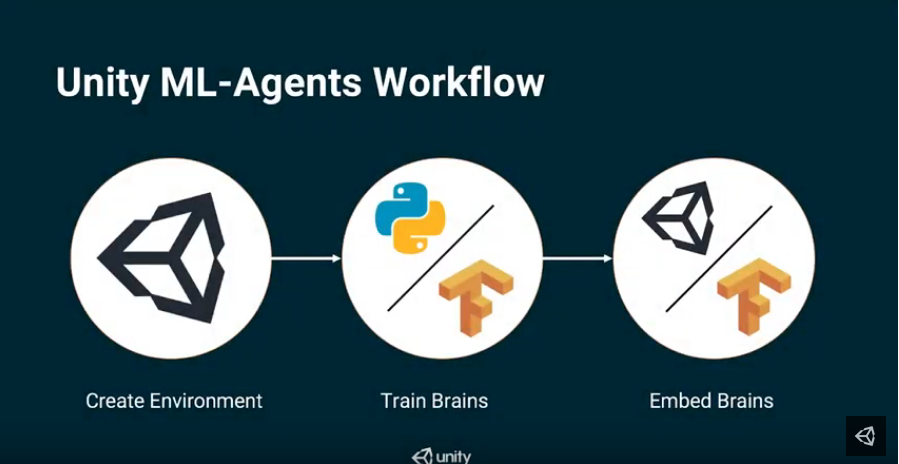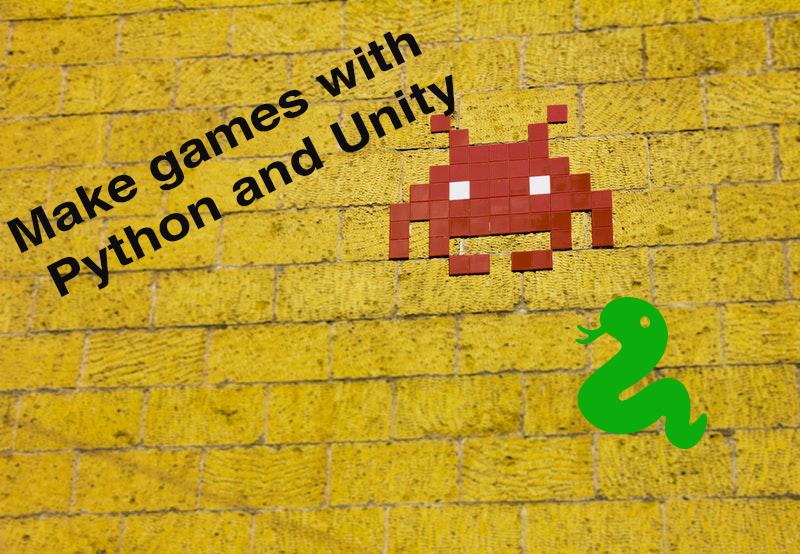The latest stable copy of Unity installed on your machine — currently 2018.2. A code editor of your choice. Python and OpenCV installed (installation instruction in the appropriate section). For now, assuming you have Unity set up, Download the project materials using the “Download Materials” link at the top or bottom of this tutorial. GitHub - Unity-Technologies/pythonnet: Python for.NET is a package that gives Python programmers nearly seamless integration with the.NET Common Language Runtime (CLR) and provides a powerful application scripting tool for.NET developers.
⚡️ A very fast, simple, and general inter-process communication example between Unity3D C# and Python, using ZeroMQ.
PS. It looks slow in the GIF above because I put a delay of one second between each message so that you can see itworking.
Core Pillars
- very fast — ZeroMQ is a networking library that allows you to send huge amount of data from server to client in a short period of time. I’m talking about casually sending/receiving 10,000 requests per second.
- simple — You don’t have to explicitly open and bind a socket or know anything about low-level networking.
- general — You can use this to send/receive any kind of data request. You can send image, video, text, JSON, file, or whatever you want. In this example, we are sending text.
- inter-process — The communication is done inside the same machine. Which means very low-latency.
Python In Unity Game
Introduction
- Have you ever tried to communicate C# code in Unity3D with Python before but could not find a satisfying solution?
- Have you ever tried implementing communication protocol using file read/write and found out that it’s a stupid approach?
- Have you ever tried communicating using Web HTTP request and found out that it’s stupidly slow and high latency?
- Have you ever tried communicating using socket/TCP/UDP stuff, but it feels like you are reinventing the wheel and youare becoming a network engineer?
- Have you ever tried to communicate by emulating a serial port, and found out that it’s not how cool guys do work?
- Have you ever tried to send Unity input to python and do some scientific work (maybe even machine learning task)and return the output to Unity?
- Have you ever tried to build a
.dllfrom python or even rewrite everything inC#because you don’t know how tocommunicate between python and C# processes? - Have you ever tried to embed
IronPythonorPython.NETinside Unity but it doesn’t allow you to install youramazing external python libraries? (And its minimal power is pretty ridiculous compared to your external python) - Have you ever tried to export a
TensorFlow Protobuf Graph(Deep learning model) and useTensorFlowSharporOpenCVForUnityto import the graph inside Unity because you want to use the model to predict stuff in Unity, but itdoesn’t allow you to use/utilize your new NVIDIA GeForce RTX 2080Ti, and it’s also hard to code? - Tried
MLAgents, anyone?
If you answer Yes to any of these questions but it seems you have found no solutions,then this repository is definitely for you!(If you answered Yes to all questions, you and me are brothers! 😏)
I’ve tried a lot. With a lot of searching on the internet, I’ve found no solutions that is simple, fast, and generalenough that I can apply to any kind of communication between Python and Unity3D. All I’ve done in the past were simplya hack to either get my scientific computation work in Unity instead of python, or communicate between the processes painfully.
Until I found ZeroMQ approach from this repository(and some head scratching).
Solution Explanation
I’ve built a request-reply pattern of ZeroMQ where Python (server) replies whenever Unity (client) requestsa service from Python.
The idea is to create a separate thread inside Unity that will send a request to python, receive a reply and log the replyto the console.
Getting Started
- Clone this repository using
git clone https://github.com/off99555/Unity3D-Python-Communication.gitcommand. - Open UnityProject (its
dllfiles are targeting .NET 4.x version) and runAssets/NetMQExample/Scenes/SampleScene. - Run python file
PythonFiles/server.pyusing commandpython server.pyon a command prompt. - You should start seeing messages being logged inside Unity and the command prompt.
Specifically, Unity will send request with a message Hello 10 times, and Python will simply reply World 10 times.There is a one second sleep between each reply on the server (to simulate long processing time of the request).
Please read the comments inside PythonFiles/server.py and UnityProject/Assets/NetMQExample/Scripts/ and you willunderstand everything more deeply.
Run Python In Unity
The most important thing is that you should follow the 4 getting started steps first. Don’t skip it! ❣️

After you’ve understood most of the stuff but it’s not advanced enough, you should consult the officialØMQ - The Guide.

Requirements
- PyZMQ is the Python bindings for ZeroMQ. You can install it using
pip install pyzmqcommand or see more installation options here orhere. - NetMQ is a native C# port of ZeroMQ. Normally you need to install this using
NuGetpackage manager insideVisual Studiowhen you want to build a .NET application, or you could install using.NET CLI. But for this repository here, you don’t need to do any of the installation because we’ve already includedAsyncIO.dllandNetMQ.dllfor you insideUnityProject/Assets/NetMQExample/Plugins/directory.If you want to build your owndllfiles, please take a look atthis issue.
Known Issues
Based on this issue, the NetMQ implementation is not working nicely with Unity. If you create more than one ZeroMQ client in Unity, the Unity editor will freeze.
Troubleshooting
While both server and client are running and communicating fine, I kill the server process, restart the server, then both server and client seem to not be communicating anymore. Why don’t they continue communicating? Is this a bug?
No, this is the expected behavior of ZeroMQ because of the simplicity of the code. It’s mentioned in the guidehere. If you want to make the code better, which is notthe focus of this example, you can learn more about ZeroMQ as suggested in the screenshot below.
The problem is that when you restart the server, the server won’t reconnect to the old client anymore. You have to restart the client also.
Using Python In Unity
Disclaimer
This repository is designed to be a minimal learning resource for getting started. It’s not a fully working high-level package.After you understand the example, my job is done.
Most of the code are just copies from the official ZeroMQ tutorial. I try to make this as simple to grasp as possible,so I only log the message to the console and nothing fancy. This is to minimize the unnecessary learning curve.


Python Interpreter In Unity

TODO
